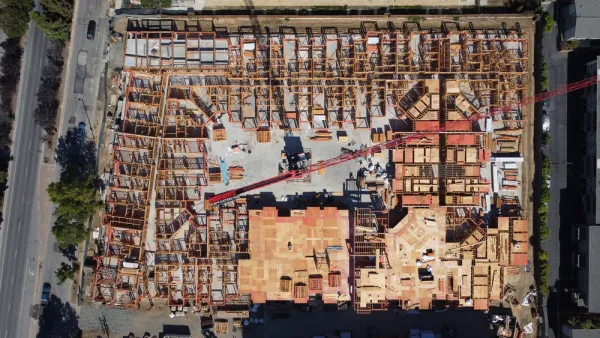Despite a few high-profile failures, the California State Legislature has approved a steady drumbeat of pro-development reforms that loosen zoning restrictions. The state raised the stakes on its zoning reforms this week.

California Governor Gavin Newsom signed senate bills 8, 9, and 10, and Assembly Bill 1174, into law this week—each intended to spur the creation of more housing supply by loosening zoning restrictions. The California State Legislature approved SB 9 and SB 10 late in August, but the governor's signature waited until the conclusion of a recall vote which ultimately ended in his favor.
The California State Legislature has provided a battleground for housing and zoning policy reform for several years now, with SB 9 attracting most of the attention of forces on either side of the issue in the 2021 legislative session. According to a statement released by Gov. Newsom's office to announce the signing of the bills, the California Housing Opportunity and More Efficiency (HOME) Act (SB 9) "facilitates the process for homeowners to build a duplex or split their current residential lot, expanding housing options for people of all incomes that will create more opportunities for homeowners to add units on their existing properties."
Proponents of the bill are calling the governor's action the end of single-family zoning in California (although some would argue that the statewide legalization of accessory dwelling units in 2016 had the same effect). Regardless of where one draws the line, California now undisputedly joins Oregon as the two state's making the most aggressive use of state preemption to override local zoning laws to reverse the racist roots of exclusionary zoning and, potentially, provide more affordable housing options for residents.
As for SB 10, the press release provides this explanation:
SB 10 by Senator Scott Wiener (D-San Francisco) creates a voluntary process for local governments to access a streamlined zoning process for new multi-unit housing near transit or in urban infill areas, with up to 10 units per parcel. The legislation simplifies the CEQA requirements for upzoning, giving local leaders another tool to voluntarily increase density and provide affordable rental opportunities to more Californians.
Senator Scott Wiener, of course, authored some of the state's previous, failed attempts at dramatic overhauls of the planning and zoning status quo in the name of a supply side approach to the state's housing affordability crisis, SB 827 and SB 50.
SB 8, authored by State Senator Nancy Skinner (D-Berkeley), "extends the provisions of the Housing Crisis Act of 2019 (SB 330) through 2030. The Housing Crisis Act of 2019, which was scheduled to expire in 2025, accelerates the approval process for housing projects, curtails local governments’ ability to downzone and limits fee increases on housing applications, among other key accountability provisions."
Also receiving a mention in the press release is AB 1174, by Assemblymember Tim Grayson (D-Concord), "an urgency measure that makes changes to the existing streamlined, ministerial approval process for housing development in jurisdictions that have not yet made enough progress towards their allocation of their regional housing needs." The Regional Housing Needs Assessment process, underway right now throughout the state, is proving continuously controversial and contentious.
California YIMBY, a leading proponent of the state's recent pro-development legislation, also put out a press release celebrating the final approval of the four bills, saying the bills will "significantly advance the goal of increasing housing affordability and availability throughout the state, especially in urban areas and near transit." Livable California, the high-profile group on the other side of the issue, was calling for the governor to veto the bills up until the 11th hour.
FULL STORY: Governor Newsom Signs Historic Legislation to Boost California’s Housing Supply and Fight the Housing Crisis

Analysis: Cybertruck Fatality Rate Far Exceeds That of Ford Pinto
The Tesla Cybertruck was recalled seven times last year.

National Parks Layoffs Will Cause Communities to Lose Billions
Thousands of essential park workers were laid off this week, just before the busy spring break season.

Retro-silient?: America’s First “Eco-burb,” The Woodlands Turns 50
A master-planned community north of Houston offers lessons on green infrastructure and resilient design, but falls short of its founder’s lofty affordability and walkability goals.

Test News Post 1
This is a summary

Analysis: Cybertruck Fatality Rate Far Exceeds That of Ford Pinto
The Tesla Cybertruck was recalled seven times last year.

Test News Headline 46
Test for the image on the front page.
Urban Design for Planners 1: Software Tools
This six-course series explores essential urban design concepts using open source software and equips planners with the tools they need to participate fully in the urban design process.
Planning for Universal Design
Learn the tools for implementing Universal Design in planning regulations.
EMC Planning Group, Inc.
Planetizen
Planetizen
Mpact (formerly Rail~Volution)
Great Falls Development Authority, Inc.
HUDs Office of Policy Development and Research
NYU Wagner Graduate School of Public Service




























